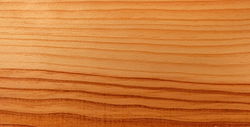Precise identification of wood samples can be very difficult indeed, especially when one considers how many different types of wood there are. For this requirement, it will suffice to bring in five samples and teach the student to distinguish between them. Unless you are already an expert at identifying wood, you would be well served to visit a specialty lumber establishment and ask for a few samples of five species. These types of stores are staffed by extremely knowledgeable people. You may also have luck at a hardware/lumber store such as Lowes or Home Depot. These stores will often display their hardwoods in a different section away from the construction lumber (which is mostly fir and pine). They commonly carry oak, maple, and poplar lumber, and less commonly, cedar. Beech, oak, and luan (a cheap grade of mahogany) are usually available in plywood form. You may also be able to get free samples at a hardwood floor store.
When you have your samples, label them on one side so you can be sure of their identities.



0 comments:
Post a Comment